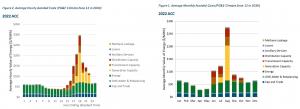In December 2022, the California Public Utilities Commission voted to drastically reduce the value of exported solar energy through new NEM 3, aka net billing.
IRVINE, CALIFORNIA, UNITED STATES, January 4, 2023 /EINPresswire.com/ — After a long battle between California’s investor-owned utilities (IOUs) and the solar industry, the California Public Utilities Commission (CPUC) has unanimously voted (5-0 pass) to drastically reduce the value of both commercial and residential solar energy exported to the grid through new NEM 3 aka “net billing” rules built to replace net energy metering (NEM) programs.
Businesses and residences alike are facing all-time high electricity rates, this paired with growing sentiment for the global climate crisis has forced many to look for alternative solutions that may provide sustainability. Renewable energy solutions like commercial solar and energy storage have shown to be proven investments that not just reduce electricity costs, but provide even more savings throughout the life of the system as electricity costs continue this sky-high trajectory.
What Was Net Energy Metering?
Net energy metering (NEM 1 & 2) are key programs that solar solutions have been designed around in California. NEM programs provide value to solar owners who don’t need all of the electricity their system produces, awarding retail-value credit for every kilowatt-hour (kWh) sent to the grid. Owners could either exchange those credits for an equal amount of electricity when needed, save credits or roll them over from month-to-month.
Net Energy Metering (NEM) is the difference between energy produced and energy consumed, resulting in net energy.
This compensation has helped reduce payback times and increase solar adoption, but IOUs such as Pacific Gas and Electric (PGE), Southern California Edison (SCE) and San Diego Gas and Electric (SDGE) have fought to reduce their costs for the program for years. Even going as far as to request retroactive changes to previous iterations of NEM, potentially going back on their agreements with all existing solar owners.
Thankfully, customers currently with NEM 1 or 2 are locked in for 20 years after the switch to NEM 3 / net billing, which is scheduled for April 13, 2023.
What Is Net Billing?
Instead of being actively metered, excess solar energy is sold to the grid at a wholesale price. California IOUs will treat all solar energy generators as large-scale energy producers, providing a dollar value based on the avoided cost calculators (ACC) in the final NEM decision.
Each utility offers their own payment schedules for seasonal, weekday and weekend rate structures, but the overall value of solar energy for any installation within an IOU service area seems to have been reduced by about 75%. Below are graphs provided by the CPUC to show how the ACC is calculated hourly and averaged monthly for PGE. The average value of energy is fairly low with spikes to incentivize more energy to be exported to the grid when it is needed.
Examples of Net Metering Changes in Hawaii and Florida
As solar energy is only accessible during the day, net metering programs everywhere help incentivize the adoption of rooftop solar. Some regions, like Hawaii in 2015, have removed net metering incentives due to the straining electrical loads on limited infrastructure. Since then however, Hawaiian Electric has reconsidered this change – recently proposing a program that incorporates elements similar to net metering. Following infrastructure investment, Hawaii is re-implementing incentives for distributed generation and introducing more for energy storage systems, continuing to incentivize sustainability.
Watching California’s NEM rulemaking closely was 3rd-largest investor-owned utility, Florida Power & Light (FPL). In early 2022, FPL successfully slashed the value provided by their net metering program and introduced facility charges, grid access fees and minimum monthly payments for solar owners. Similar to when they were suggested for California, these changes were met with backlash from the solar industry. More than just updating a program, extra charges for solar owners were seen as a tax on solar generation, moving in the opposite direction from where the incentive of net metering began.
How Does Net Billing Affect Solar in California?
The California Public Utilities Commission (CPUC) has designated a 9-year payback period as their target for new solar installations after NEM 3 / net billing begins for new projects after April 2023. Previously through net metering programs, commercial and residential systems in California would average 3-7 years before the savings generated by the system would pay for itself.
According to the wholesale rates provided by net billing, most commercial solar installations will rely on being paired with energy storage systems (ESS) to store electricity and send it back to the grid at night for more value per kWh. Energy storage systems had been paired with solar before but currently face supply constraints that limit access to the technology.
Other net metering programs like net energy metering aggregation (NEMA) and virtual net metering (VNEM) will continue to operate under NEM 2, at least for the next 9 years.
Also taking effect in 2023, a change to California’s Energy Code requires both solar PV and energy storage systems for most new commercial buildings, as decided by the California Energy Commission (CEC) for their building energy efficiency standards.
How to Lock In NEM 2 Before Utilities Start Net Billing
While the vote for NEM 3 / net billing was made official on December 15, 2022, there are 120 days before the new program is required for new solar installations in California, April 13, 2023 is the deadline. Due to long lead times for commercial projects, utilities require a complete and final NEM application submitted before that date.
Preparing for this ruling to pass, Revel Energy’s expert team has already helped many California businesses preserve the value offered by NEM. While it may take utilities some time to truly implement net billing programs, agricultural, commercial and industrial solar installed without a NEM agreement after April 2023 face significantly reduced export rates and increased payback periods.
Contact Revel Energy today to learn how your business can reduce operating costs through commercial solar and energy storage, creating capital through sustainability.
Tyler Crossno
Revel Energy
email us here
Visit us on social media:
LinkedIn
YouTube
California IOU Customers Facing New NEM 3 / Net Billing Rules for Commercial Solar
![]()




